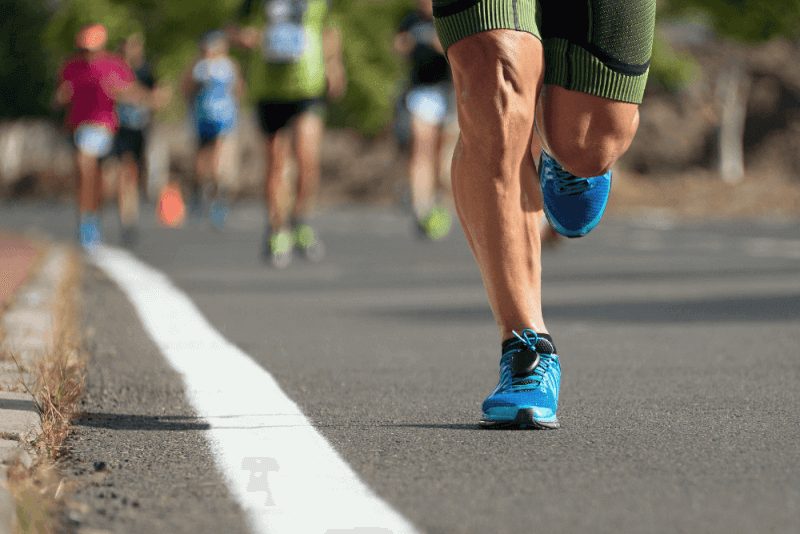30-Second Summary
- It refers to pain felt around the kneecap and the front of the knee.
- The stages of chondromalacia patella are graded based on bone changes. Moderate and severe stages can be observed through MRI imaging.
- In most cases, chondromalacia patella heals within 8 weeks. Following the doctor's recommendations during this period is extremely important.
- To reduce the risk of recurrence and support recovery, wearing appropriate shoes and gradually increasing training to strengthen leg muscles is necessary.
What Is Chondromalacia Patella (Runner's Knee)?
Also known as runner's knee, chondromalacia patella refers to pain felt around the kneecap and the front of the knee. The kneecap is located at the front part of the knee. When the knees bend, the back of the kneecap glides over the cartilage of the thigh bone.
This movement is aided by ligaments and tendons that connect the knee bone to the shinbone and thigh muscle. Pain can occur when any of these parts fail to move or function normally. Anterior knee pain is a common symptom and can result from various causes.
Causes of Chondromalacia Patella (Runner's Knee)
The causes of chondromalacia patella include:
- Tight hamstrings
- Tight Achilles tendons
- Poor foot support
- Flat feet
- Injury or trauma to the kneecap, such as dislocation or fracture
- Weakness in the muscles of the thigh, hip, or knee that help align the kneecap properly
- Repetitive stress from activities like long-distance running or prolonged jumping sports
- Overuse of the knee due to excessive training
- Arthritis, which can cause inflammation or degeneration of the knee cartilage
- Abnormal positioning of the kneecap
Symptoms of Chondromalacia Patella (Runner's Knee)
The symptoms of chondromalacia patella include:
- Dull and aching pain at the front of the kneecap
- Pain that comes and goes and worsens after prolonged sitting
- A feeling of grinding or creaking when the knee is bent and straightened
- Pain in one knee more than the other
- Swelling or bruising around the kneecap
These symptoms may become more severe in the following situations:
- Squatting
- Running
- Sitting with the knees bent for long periods
- Climbing up or down stairs
Diagnostic Criteria for Chondromalacia Patella (Runner's Knee)
To diagnose chondromalacia patella, a physical examination is primarily required. The following tests may then be requested:
X-Ray
An X-ray provides an image of the knee joint and helps rule out other issues that might cause knee pain, such as injuries.
Magnetic Resonance Imaging (MRI)
MRI provides more detailed images of the knee joint and surrounding tissues, making it particularly effective in identifying runner's knee.
Treatment Methods for Chondromalacia Patella (Runner's Knee)
The goal of chondromalacia patella treatment is to reduce the pressure on the knee. Therefore, the following methods can be applied:
Ice Compress
In some cases, resting and applying an ice compress to the joint several times a day may be sufficient for recovery.
Pain Relievers
Pain relievers that can be prescribed to help alleviate knee pain include:
- Topical formulations such as creams or patches
- Over-the-counter anti-inflammatory drugs like ibuprofen to reduce inflammation and swelling
- NSAID medications are prescribed if the pain or swelling is severe.
Physiotherapy
Non-weight-bearing exercises such as swimming or cycling on a stationary bike help strengthen the hip and thigh muscles. Physiotherapy can strengthen these muscles and prevent misalignment of the knee joint.
Surgery
Arthroscopy, a minimally invasive procedure, is performed to allow the doctor to view the knee joint using a small camera. Along with arthroscopy, several of the following procedures may be performed:
- Lateral release: A procedure where certain ligaments are cut to reduce tension, facilitate movement, and correct the backside of the kneecap.
- Cartilage graft implantation
- Realignment of the insertion point of the thigh muscle
Stages of Chondromalacia Patella (Runner's Knee)
The stages of chondromalacia patella are graded based on bone changes. Moderate and severe stages can be observed through MRI imaging.
Stage 1 Chondromalacia Patella
In this stage, the breakdown of vertical collagen fibers causes softening and swelling of the joint cartilage. During the arthroscopy procedure, the cartilage appears spongy.
Stage 2 Chondromalacia Patella
In the second stage, blister formation is observed in the joint cartilage due to the separation of superficial cartilage layers from the deep cartilage layer. Additionally, cartilage cracks with an area less than 1.3 square centimeters, not extending to the subchondral bone, are present.
Stage 3 Chondromalacia Patella
At this stage, cartilage cracks extending to the subchondral bone but affecting less than 50% of the patellar joint surface exhibit ulceration, fragmentation, and fibrillation.
Stage 4 Chondromalacia Patella
This stage involves crater formation and hardening of the exposed subchondral bone, with more than 50% of the patellar joint surface exposed. Sclerosis and erosions of the subchondral bone are present, and osteophyte formation is also observed.
Recovery Process for Chondromalacia Patella (Runner's Knee)
In most cases, chondromalacia patella heals within 8 weeks. During this time, it is extremely important to follow the doctor's recommendations. Additionally, to reduce the risk of recurrence and support recovery, wearing appropriate shoes and gradually increasing training to strengthen leg muscles is necessary.







